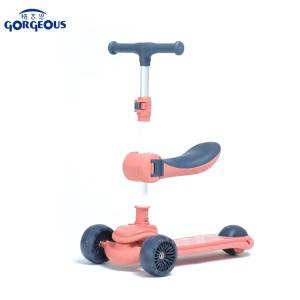Mar . 25, 2024 16:06 Back to list
Electric Scooters: Understanding the Manufacturing Process
Electric scooters have propelled their way into urban mobility with increasing popularity, offering a convenient and eco-friendly alternative to traditional transportation. Many enthusiasts and potential buyers are curious about the making of these innovative machines. In this article, we delve into the manufacturing process of electric scooters to satisfy your curiosity and highlight the precision engineering behind your ride.
Design and Prototyping
The journey begins with detailed design and engineering. Engineers use CAD software to create a prototype, focusing on structural integrity, safety, and user experience. This initial design is crucial; it not only forms the template for mass production but also helps in identifying any potential manufacturing issues.
Sourcing of Materials
The next step in the production line involves sourcing quality materials. The most common materials used are aluminum and steel for the frame, both known for their lightweight and durable properties. Polypropylene or ABS plastic might be chosen for certain aesthetic components due to their flexibility and resilience.
Cutting and Shaping
Once materials are sourced, they undergo cutting and shaping into specific parts of the scooter, like the deck, handlebars, and stem. High-precision cutting tools, such as laser cutters or CNC machines, ensure components meet the exact design specifications.
Motor and Battery Assembly
One of the electric scooter's most critical components is its motor. This is typically a brushless DC motor, which is preferred for its efficiency and durability. Alongside the motor, the battery pack, usually lithium-based, is assembled to provide the power necessary for propulsion.
Circuitry and Controls
The electric circuitry forms the scooter's nervous system, linking the throttle, brakes, and lighting to the central controller. Circuit boards are carefully designed and populated with components before they are tested for functionality.
Frame Assembly
With all the individual components prepared, the scooter's frame is assembled. The process is often a combination of human and robotic efforts to ensure precision. Critical elements like the folding mechanism and suspension are fitted at this stage to ensure the scooter is both portable and comfortable to ride.
Quality Checks and Testing
Quality control is an integral part of the manufacturing process. Each electric scooter is tested for mechanical integrity, electronics function, and safety. This might include road tests or simulated usage scenarios to authenticate performance standards.
Packaging and Shipping
The final step sees the electric scooter being carefully packaged to prevent damage during transport. Once boxed, scooters are shipped out to distributors, retailers, and directly to customers, ready to glide through cityscapes.
In essence, the production of electric scooters involves a meticulous combination of design innovation, material selection, component manufacturing, and rigorous testing to ensure the rolled-out product is efficient, reliable, and ready for the demands of daily commuting.
-
Kiddo Bike Lightweight & Safe Y Bike Balance Bike for Kids
NewsJul.08,2025
-
Velo Junior Balance Bike – Lightweight & Safe Kids Learning Bike for Toddlers
NewsJul.08,2025
-
Graco Purple Stroller – Stylish, Safe & Comfortable Baby Transport Solution
NewsJul.07,2025
-
Tough Trike Tricycle for Kids – Durable & Safe Walkable Trike for Toddlers
NewsJul.07,2025
-
Kids Cycle for Sale - Durable & Safe Bikes for Kids from Top Factories
NewsJul.07,2025
-
Best Toddler Exercise Bike – Safe & Fun Child's Exercise Bike for Active Kids
NewsJul.06,2025

